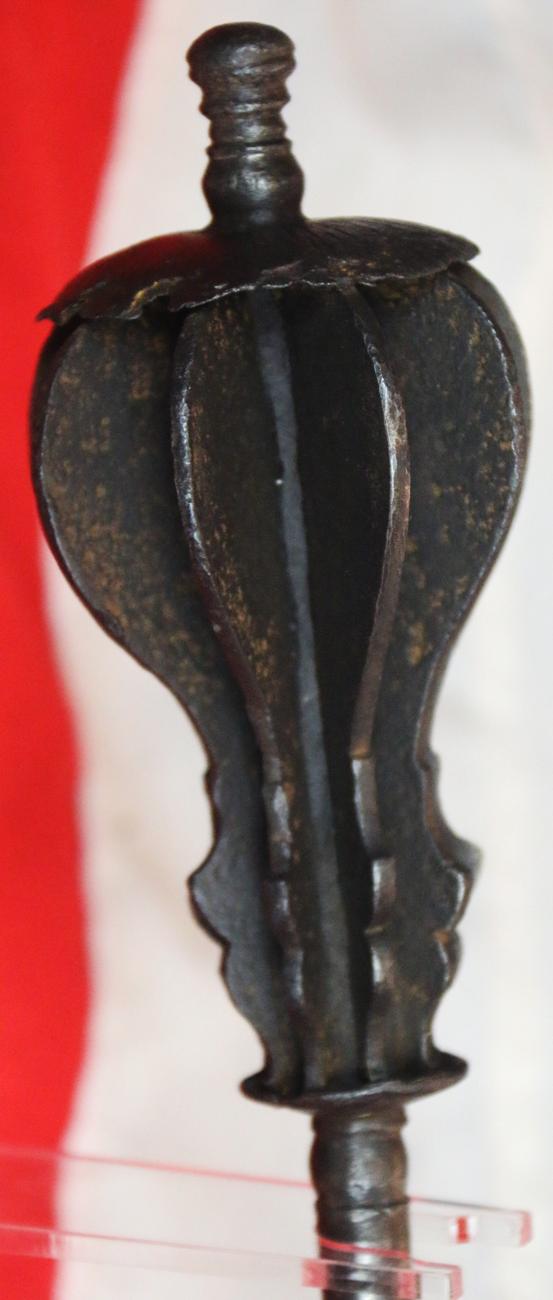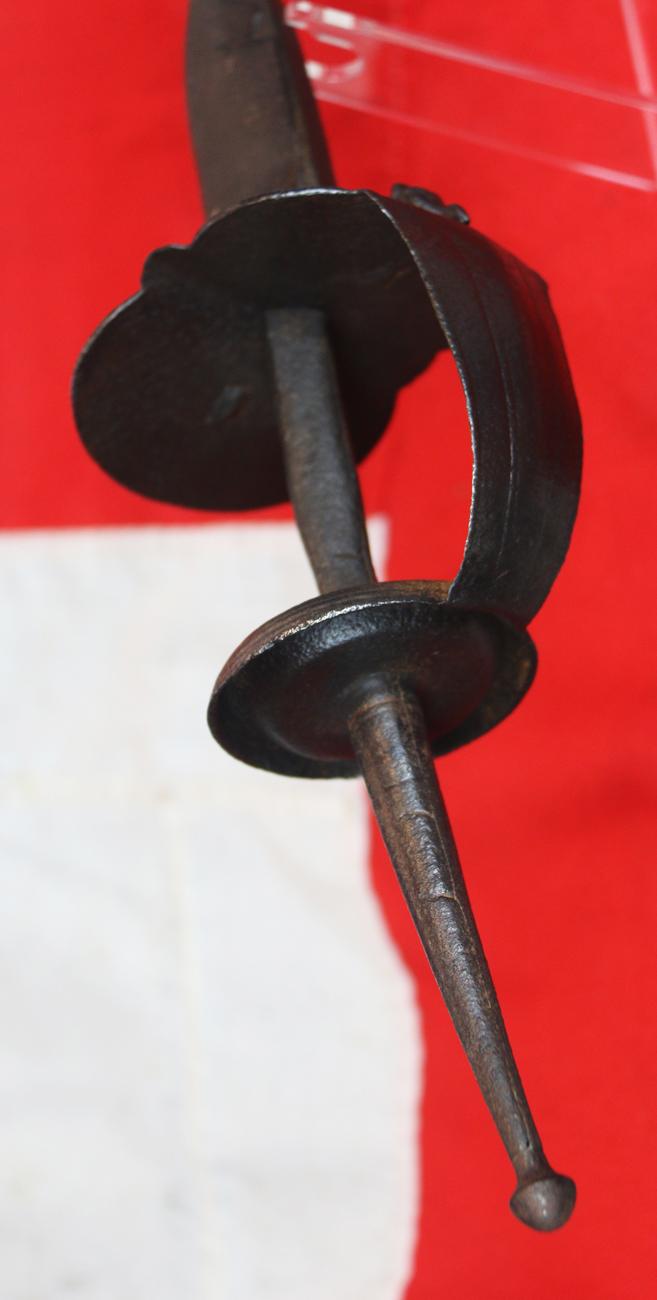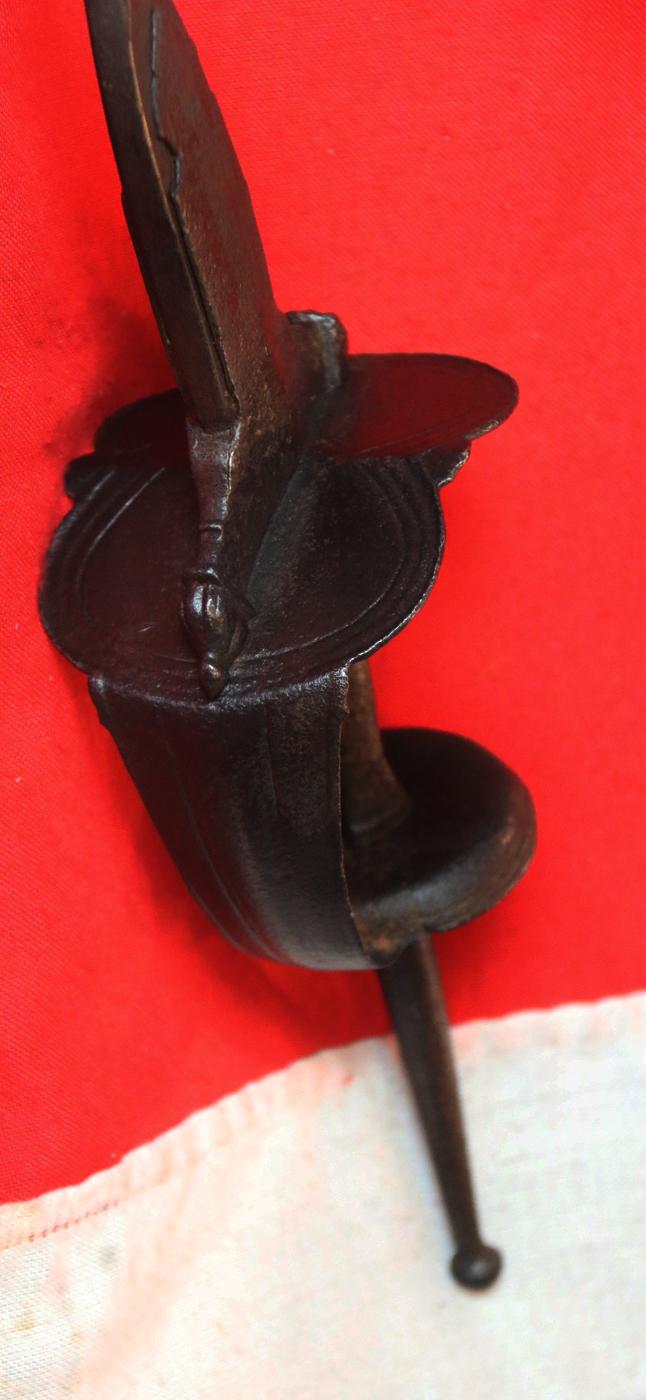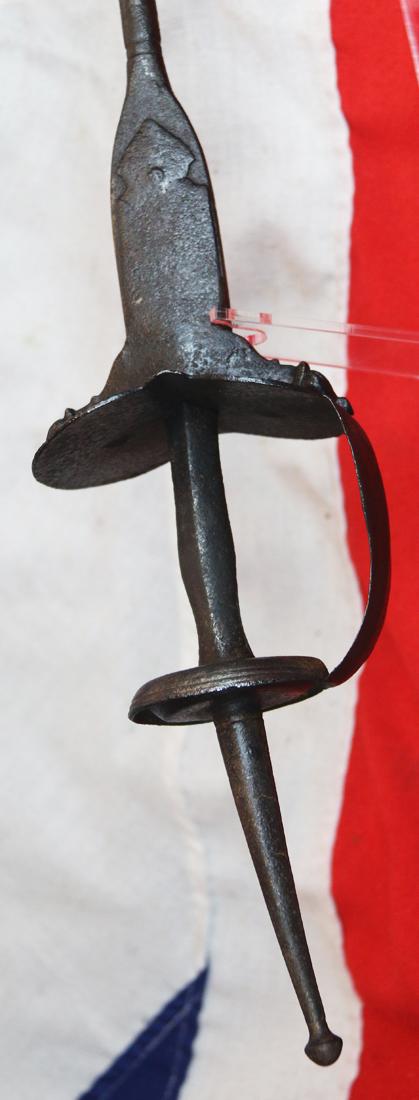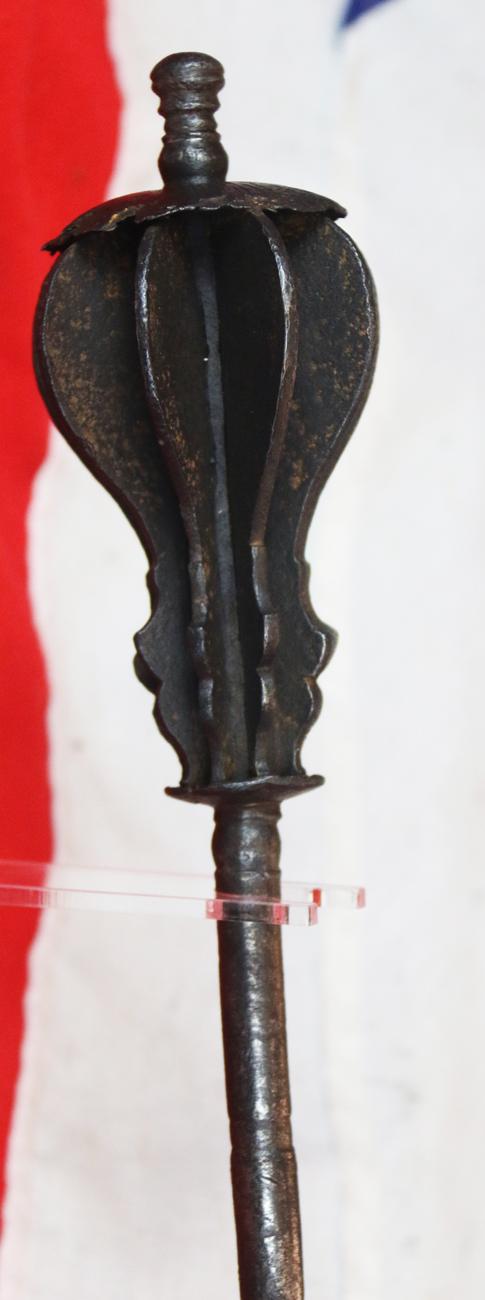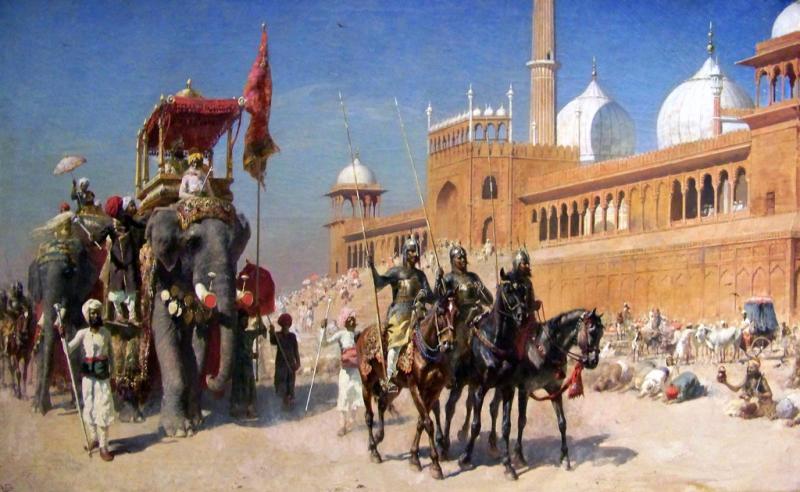One Of The Most Impressive, Fiersome, & Effective, Combat Weapons Ever Created. A 1600's to Early 1700's Mughul Period Battle Mace Shishpar With 8 Flanged Head and Khanda Sword Hilt. A Most Formidable Usually Hindu Piece Yet As Popular in Ancient Persia
One of two fabulous early examples we acquired. In ancient Persian texts this has been the decisive weapon of choice by great warriors, used to kill the dragon Kasfud by Gev, in ancient Persian texts, and known as the ‘Thunderbolt of Indra’ in ancient Indian texts, and also the Sky Borne Splitter.
A style of battle mace that goes back to the earliest days of medieval knightly warfare. As popular in Europe as it was in the Indian Sub Continent. Being a fantastic Moghul period example it has the highly distinctive khanda sword hilt, which has a protective half basket guard for the hand, and the projecting pommel spike to enable both two handed combat and a counter point for reverse striking and blows.
It has its traditional iconic feature of a shaped flange head, common with all steel flanged head maces, with ring turned finial, ring turned haft with characteristic hilt with upturned guard and broad knuckle bow, dished disc pommel with elongated spike finial.
Rare 17th - 18th C. Indian shishpar battle mace with khanda sword Hilt. Rare early example of the Indian battle-mace weapon "Shishpar" used by skilled warrior for fighting through armoured troops, armed with a 8-flang steel head topped with an armour exhibiting heavy but smooth patina with occasional fine pitting, the edges of several flanges with dents indicating on period usage against armour. Mounted on the well balanced steel shaft with a large Khanda sword hilt of early type, some light chiselled art work around the broad guard and at the base of the large pommel spike designed to be used for two handed grip at the battle. Grip with original old ox chords still present and intact. Powerful and very battle-efficient weapon of early Hindu and Muslim warriors.
Probably from Rajasthan. Despite successive waves of Muslim conquest, Rajasthan remained predominately Hindu. It was divided into a number of small states centred around fortified cities such as Jaipur, Jodhpur and Udaipur, all of which had their own armouries that a few of these survive within today. The Gorz is a weapon often mentioned and variously described in Iranian myths and epic. In classical Persian texts, particularly in Ferdowsi’s Šha-nama , it is characterised as the decisive weapon of choice in fateful battles, and to kill the dragon of Kasafrud; by Gev, in the expedition to Mazandaran. In Indian mythology, Indra owns a club/mace (vajra-) called the Thunderbolt of Indra and made of the bones of Risi Dadici, a sacred figure in the Vedic literature. It has been also referred to by many other names and descriptions, including sky-borne, splitter, destructive.
Overall length 80cm, a heavy grade piece of superb quality
Every single item from The Lanes Armoury is accompanied by our unique Certificate of Authenticity. Part of our continued dedication to maintain the standards forged by us over the past 100 years of our family’s trading, as Britain’s oldest established, and favourite, armoury and gallery
Code: 24186
2375.00 GBP


